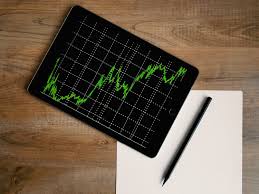If you are someone who is fascinated by the world of trading and investing, then you would have definitely heard about CFD trading. CFD or Contract for Difference is a popular financial instrument that allows traders to speculate on the price movements of various financial assets such as stocks, indices, commodities, and currencies. But, before you dive into the world of CFD trading, it is essential to understand the fundamentals of this market and how it works. In this comprehensive guide, we will take you through the basics of cfd trading and help you decide if it is the right investment option for you.
How Does CFD Trading Work?
In CFD trading, a trader enters into a contract with a broker, wherein they agree to exchange the difference between the opening and closing price of an underlying financial asset. Since it is a contract-based trading, CFDs are highly leveraged instruments, which means that traders can gain exposure to a much larger position compared to their initial investment. However, this also means that traders are exposed to a higher level of risk and may end up losing more than their initial investment.
What are the Benefits of CFD Trading?
CFD trading offers several advantages to traders, which make it a popular instrument among both amateur and professional traders. Some of the key benefits of CFD trading include access to a wide range of financial assets, flexible trading options, high leverage, low trading fees, and the ability to profit from both rising and falling markets. Additionally, CFD trading also offers a significant advantage over traditional trading as traders can take short positions and benefit from a market downturn.
Risks Involved in CFD Trading
While CFD trading can be a lucrative investment option, it also comes with a significant level of risk. Since traders are exposed to leveraged positions, it is essential to have a good risk management system in place to minimize losses. Additionally, traders must also keep an eye on the margin calls and ensure that they maintain sufficient funds in their trading account to cover their open positions. Furthermore, traders should also be aware of the underlying market conditions, economic events, and policy changes that can impact the price movements of the underlying assets.
Tips for Successful CFD Trading
To succeed in CFD trading, traders must have a robust trading strategy in place. This includes conducting thorough market research, setting realistic trading goals, using technical and fundamental analysis tools, developing a risk management plan, and monitoring their trading performance regularly. Additionally, it is important to stay updated with the latest market news and trends and make informed decisions based on that. Most importantly, traders should refrain from overtrading, emotional trading, and making impulsive decisions.
Choosing a CFD Broker
When it comes to CFD trading, choosing the right broker can make a huge difference. It is essential to select a regulated and reputable broker who offers a wide range of financial assets, competitive trading fees, flexible trading options, advanced trading platforms, and reliable customer support. Moreover, brokers should also provide educational resources, trading tools, and market analysis to help traders make informed trading decisions.
Conclusion:
CFD trading can be a highly rewarding investment option for traders who understand the market fundamentals and have a solid trading plan in place. However, it is important to remember that CFD trading is a high-risk, high-reward market, and traders should exercise caution and adopt a disciplined approach to maximize their chances of success. We hope that this guide has provided you with valuable insights into the world of CFD trading and helps you navigate this market with ease.
